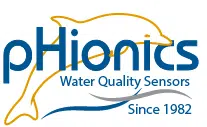STs Series pH FAQ
How should the sensor be stored?
How long does the electrode last?
Typical electrode life in an innocuous application is about three years. The nature of the solution being measured (flow rate, pH range, ion concentration etc.) all affect longevity so the lifespan can range from 6 months to 5 years. Electrode life must be determined empirically for each application through consistent calibration.
Is the output automatically temperature-compensated (ATC)?
The output is adjusted by 2% per °C relative to 25°C. A thermistor within the housing is used which is why the ATC is most accurate when the device is fully submersed. ATC functions regardless of whether the temperature output is in use.
Do you provide a warranty?
Yes, our products come with a 2-year warranty, excluding the electrode. These products are designed to last far longer if properly cared for and we will do what we can to help if any problems occur in or out of warranty. Please don’t hesitate to reach out!
What voltage is required for the STs Series pH?
An 8VDC power supply is sufficient with standard lengths of cable. Voltage drop must be accounted for over long lengths of cable (50+ ft.) to ensure enough power is supplied to any water quality sensor. To calculate it, first double the length of cable to get the account for the full length of the circuit, then multiply that by resistance per foot/meter to get total resistance. pHionics uses 24 AWG tinned-copper wire which has a resistance of 0.026 ohms per foot (0.084 ohms per meter). Multiply total resistance by the maximum expected current (20 mA, or 0.02 A, is safest) to obtain expected voltage drop. Verify that the voltage drop plus required voltage for pHionics sensors (8 VDC) is less than the power supply voltage. Please visit our article on voltage drop for more information and example calculations.
How long are STs Series devices expected to last?
While the electrode will require replacement every three years on average, the housing, seals, and cables are intended to last 10-20 years with proper care. To increase longevity of the seals, the Viton O-rings should be relubricated with a silicon grease during each disassembly, or at least inspected for any debris or damage. The harshness of the solution (high/low pH, extreme salinity, high pressure, etc.) also affects longevity. All parts are replaceable to save money and limit waste in the event that any piece gets damaged.
What type of electrode is provided?
Our pH electrodes are silver/silver chloride with a Teflon double junction. They are replaceable with a gel electrolyte instead of refillable electrolyte solution to reduce overall maintenance time. For more information, please visit the STs Series pH product page.
What spare parts are recommended?
For critical measurements, a duplicate STs Series sensor is always recommended so a replacement for every part is available at any time. A duplicate simplifies troubleshooting by always having a functional STs Series available. It also allows for swapping of devices during calibration and cleaning so the measurement or process is not significantly disrupted. At a minimum, a spare electrode is recommended in the event of damage–or the need for eventual replacement–when waiting for a replacement to be shipped could be detrimental to your application.
How often should the STs Series pH be calibrated and/or cleaned?
The frequency of calibration must be determined empirically as rate of drift and debris accumulation differs for each application. Calculating the offset during calibration provides information on whether the electrode is still viable. See our article on Proper Sensor Calibration for assistance in the process. Check out our pH Electrode Care Guide for cleaning and troubleshooting procedures.
How can the STs Series be installed/mounted?
The STs Series can be mounted in-line or immersed with the cmp-k compression fitting in a 3/4″ pipe, or freely suspended by the Kevlar™ cable. Please see the pHionics STs Series Device Manual or contact us at support@phionics.com for more information.
Product specific questions?
Still not finding the answers you’re looking for?
